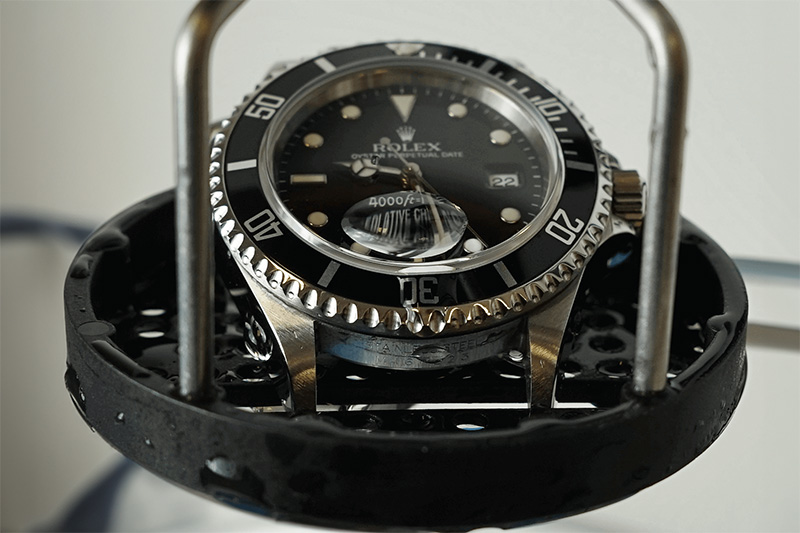Understanding water resistance
Water resistance in watches is a broad and sometimes confusing topic for consumers. With various brands and case constructions, choosing a watch that suits your lifestyle can be challenging. Many watches we receive for service and repair have water damage due to exceeding their water resistance limits.
To help clarify this issue, we have created this guide with useful information on water resistance. Our expertise and equipment allow us to accurately test and assess different watch models.
We use advanced water resistance and pressure testing equipment for brands like Rolex, TAG Heuer, Omega, Breitling, and Zenith. This ensures precise evaluations and helps customers make informed decisions about their watches.

How Water Resistance is Measured
Water resistance in watches is measured in bars, with 1 bar equal to 1 atmosphere (ATM) of pressure. Watches are tested in a controlled lab environment under static air pressure for a short time. However, different manufacturers may display water resistance ratings in bars, meters, feet, or ATM, even though they mean the same thing—for example, 3 bar, 3 ATM, and 30 meters all indicate the same level of resistance.
It’s important to remember that these tests are done in a still position. In real-world conditions, moving a watch underwater increases the pressure on its seals. Even if a watch is rated for water resistance, sudden movements can cause water to enter the case.
A watch doesn’t have to reach its maximum stated depth to experience water damage. Activities like swimming, diving, or even washing hands under running water can put extra strain on the seals and compromise its resistance.
Protecting your watch from water damage
Always be cautious when wearing your watch in water. Many watches suffer water damage on holiday due to three common mistakes. First, forgetting to re-screw the crown after changing the time when entering a different time zone.
Second, exposing the watch to extreme heat from sunbathing, then suddenly cooling it in a swimming pool, which can weaken the glass gasket. Third, if a watch hasn’t been in water for a long time, its gaskets may have deteriorated, making it less water-resistant.
If you plan to use a watch for swimming, diving, or water sports, it must handle extra pressure on its seals. A screw-down crown is a must for better protection. We also recommend choosing a watch with a water resistance rating 2–3 times higher than your intended use.
For best durability, a watch rated at 200 meters is a reliable choice. These watches are generally well-constructed and include a screw-down crown to help prevent water from entering. Taking these precautions will keep your watch safe and working properly in wet conditions.

Brands we specialise in
Ready to restore your timepiece?
Ready to restore your timepiece?
Trust our expert watchmakers for precision servicing and repairs.
Contact us today to give your watch the care it deserves.









